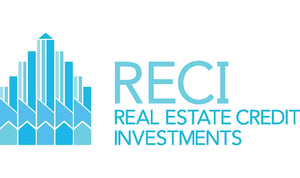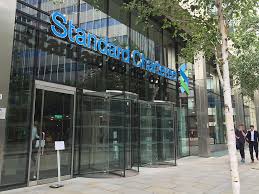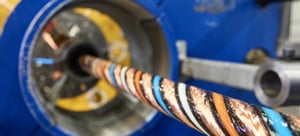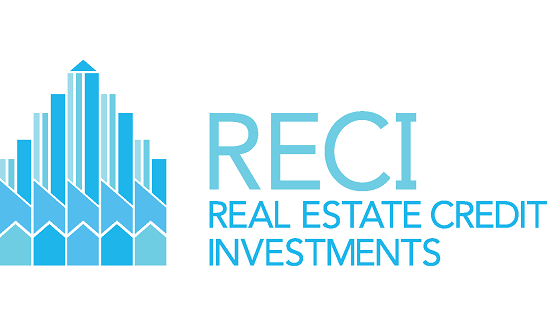WideCells Group PLC (LON:WDC) Chief Executive Officer João Andrade and Chief Scientific Officer Dr Peter Hollands caught up with DirectorsTalk for an exclusive interview to discuss the launch of their CellPlan e-commerce platform and their INDUS product launch
Q1: Now, it’s been a busy few days of news flow for Widecells with not one but two launches, firstly, your CellPlan e-commerce platform, it’s now live meaning people in the UK can purchase your stem cell insurance product directly. How does the platform work João?
A1: So, first of all, it’s been a very exciting couple of weeks now our products are being launched in the UK. Firstly, the CellPlan e-commerce platform, basically what we have done is, over the past few months, we have developed an e-commerce platform where we are able to receive the applicant details, we are able to conduct a health questionnaire, we can collect payment and then issue the insurance policy digitally, all of it on a similar process.
The importance of this platform is that it allows us to reach a higher audience, first of all, because we can offer the CellPlan to families that meet our quality criteria, this means that they have stored their baby’s umbilical cord blood in high quality facilities, that’s one of the most important points because we can reach them directly.
When we launched it last week, we launched it first to clients that are storing stem cells at Biovault which is the cord blood bank that we have entered our first referral agreement. This means they are not only offering CellPlan to all of their new clients, the first-year policy, but also making it available to all their existing database and they can complete the purchase on our e-commerce platform. Now, moving forward, all their families in the UK in the next few weeks, also in the platform, will be able to purchase CellPlan directly.
So, this is a huge milestone for the company because this e-commerce platform, we can, with very small adjustments, launch it into other markets which means we can look into countries such as Spain, Italy and so on in Europe and very quickly go to market with CellPlan.
Q2: This, obviously, is a huge achievement, what impact do you expect the platform to have on sales and revenue?
A2: Well, I think it’s going to have a huge impact because the platform itself, we’ve built it in such a way that it’s easy for the clients to understand the benefits of the CellPlan policy, also the benefits of storing stem cells for expecting parents who have not done so already. At the same time, the platform using current digital marketing tools is much easier for us to reach a wider audience and to reach more expecting parents, also, effectively target families that have already banked their children’s stem cells.
Rather than going through the conventional model using insurance brokers and so on, we are able to contact families directly and in that 2-minute process, from logging into the website to having the insurance policy issued digitally, they can complete the whole process.
So, I think that’ll have a huge impact and also because we have built the platform in such a way that we can replicate it in other markets very quickly, we can scale up the business more rapidly as well. So, I strongly believe this is going to have a positive impact on our revenues moving forward.
Q3: Regarding the rollout, the purchase of CellPlan visa the platform is currently only available in the UK to customers that have stored their stem cells with Biovault. Now, you’re clearly targeting a much wider market than this so what’s the plan for the further rollout?
A3: So, looking at the UK first, we have this agreement with Biovault, the product is now live, families who are now banking their children’s stem cells will be offered the first-year policy by Biovault as they include in their stem cells storage package, also existing clients that have already stored stem cells with Biovault will be able to purchase CellPlan on the platform. Looking into the future, and focusing here in the UK first, in the next few weeks we will make the product available to families in the UK that have stored stem cells in high quality stem cell banks that meet our quality criteria which we call the CellPlan Excel.
Perhaps, in the next 2-3 months, what we can expect to see is the product and the e-commerce platform being rolled out in European locations and next year, in other continents. There is one exception which is Brazil which we are looking to fast-track CellPlan into the market with views of having it available in the next few months.
Q4: Peter, you’re the Chief Scientific Officer, can you give us a bit on your background and why you chose to work with Widecells Group?
A4: Yes, of course. I’m a clinical scientist and I trained at Cambridge University with the guys that invented test-tube babies and they received a noble prize for that work. I went on to do a PhD in stem cell technology and I’ve worked in teaching research and clinical practice in stem cell technology for 3 years now.
Why Widecells Group? Well, Widecells gives me the opportunity, as a clinical scientist, to really bring what I believe in to the clinic because this is what we want to do, we want to increase the acceptability and availability of stem cell treatments. So, from my point of view, to be working with a company like Widecells is amazing because it gives me that platform to do what I really want to do and that’s to use stem cells in clinical therapy.
Q5: I wanted to talk to you about your second launch, launch number two. You’re due to start selling a new product called INDUS which I believe has been approved for sales across Europe, can you tell us what this is and how it’s going to be used?
A5: INDUS, I’m really delighted to add this as a new product to our range, it’s the most advanced product of its type in the artificial bones sector.
Now, this is particularly important to people like dentists who often have to have processes and procedures to replace bone in various situations. At the moment, dentists are actually using donor human bone or in most cases, they’re actually using donor animal bone so clearly this is difficult to get hold of, it has all sorts of problems and so by having a gold-standard synthetic bone we are in a unique position now.
The advantages of INDUS are that, of course, it’s there and available as and when you need it, there’s no risk of disease transmission because if we’re taking bone from human donors or even animal donors, there’s always that risk there or risk of rejection indeed. Possibly, one of the most practical points of view, when the dental surgeon uses this product, they actually have a reduced surgical time because the product is easier to handle at the point of surgery. This is really important, I saw a procedure the other day using this, it was absolutely amazing because when the INDUS touches the patient and gets in touch with the patient’s body fluids during surgery, it immediately attaches to where you’ve put it and it stays in place. Now, this is in contrast to the current application using donor human and animal bone where it actually quite commonly falls out of place so the dentist is constantly wanting to reposition so that’s better for the patient and of course better for the dentist because they can do more work in any given time.
One of the things I would add is that whilst this is a brilliant product on its own and it has massive potential, at the Widecells Institute of Stem Cell Technology we are going to develop an INDUS stem cell product. The concept here is that we actually use INDUS at the same time as stem cells so mix stem cells with the INDUS, put that into the patient and the advantage here will be that the bone will regenerate even more quickly and even better with the presence of cells. So, a great product with a massive potential.
Q6: This seems to be a bit of change to stem cells, can you explain how the two products work together and what Widecells Group’s rollout plans are for the product?
A6: Well, I mentioned the concept of using stem cells and INDUS together, we would source the stem cells from either dental pulp, dental pulp is the stem cells found inside teeth, or we can also source stem cells for this procedure from liposuction procedures so from adipose tissue or fat.
We will develop this technology in our Institute of Stem Cell Technology in Manchester to create a new protocol for the use of INDUS stem cells which can then be applied by dentists in the clinic. I should also add that, of course, there are orthopaedic applications, it’s not just dentists, which could be very important for INDUS as well.
In terms of rollout, we have the CE marking in place and we’re ready to go.






































